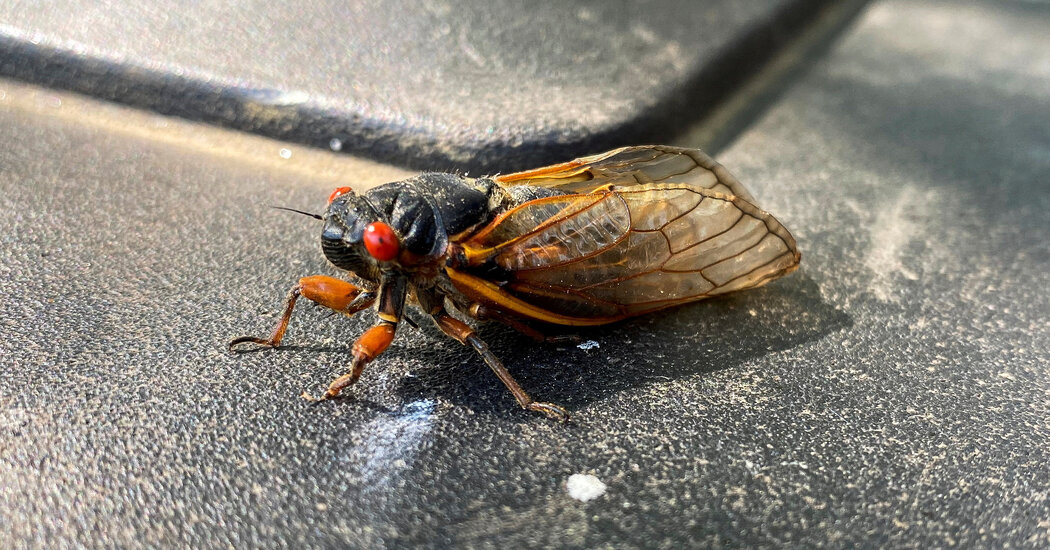Scientists are making computer models to better understand how the mysterious insects emerge collectively after more than a decade underground.
Earlier this month, millions of Americans looked up at the sky to witness a total eclipse. Now, another cyclical marvel has arrived, this time at our feet. Trillions of noisy, red-eyed insects called cicadas are emerging from the earth after more than a decade of feeding on tree roots.
The United States is home to 15 cicada broods, and in most years at least one of them emerges. This spring, Brood XIX, known as the Great Southern Brood, and Brood XIII, or the Northern Illinois Brood, are emerging simultaneously.
Cicada watchers have spotted the first insects coming out of the ground, reporting their sightings to apps such as iNaturalist and Cicada Safari. The Great Southern Brood, which emerges across the South and the Midwest every 13 years, has been seen at sites scattered from North Carolina to Georgia. The Northern Illinois Brood, which appears every 17 years in the Midwest, is expected to appear in the next month, as temperatures there warm.
How cicadas manage to rise en masse after spending so long underground remains largely a mystery. “There’s surprisingly little information about cicadas that you’d like to know,” said Raymond Goldstein, a physicist at the University of Cambridge.
Once a brood climbs out of the ground, the cicadas crawl up trees to mate, and the females lay eggs in tree branches. After hatching, the young insects drop to earth and burrow into the soil. Then, each cicada spends the next 13 or 17 years underground before emerging to mate and repeat the cycle.
That means that trillions of insects have to track the passage of time in the soil. It’s possible that they detect annual changes in tree roots. But how can cicadas add up those changes to divine when 13 or 17 years have passed? Scientists cannot say.
